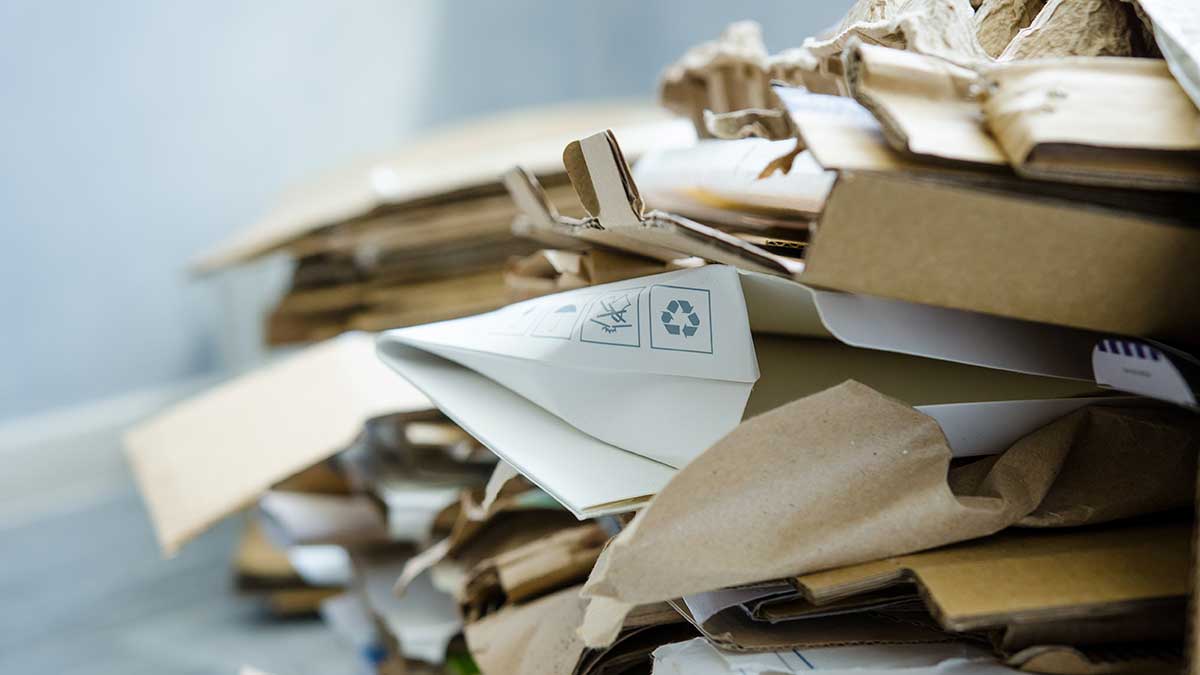
America Needs To Improve Its Cardboard Recycling
The U.S. Department of Energy’s National Renewable Energy Laboratory (NREL) has unearthed an useful fact: America’s landfills are not just repositories of waste but untapped goldmines of economic potential. But the news comes with evil tidings for paper and cardboard recycling, which NREL says has been dramatically over-reported.
An extensive analysis by NREL researchers reports that piles of cardboard and paper waste in U.S. landfills represent $4 billion in lost economic value. This insight forms the core of their research paper, Paper and cardboard waste in the United States: geographic, market, and energy assessment, recently published in the Waste Management Bulletin.
While much of the unrecycled paper comes from business, home recycling can be improved to recover more material, leading to less deforestation. This week, the Recycling Partnership (TRP) reported that only 21% of potentially recyclable materials are recycled. With just 43% of homes participating in recycling programs, the U.S. has a long way to go before it reaches the level of an “effective system,” TRP wrote.
A Close-Up on Cardboard and Paper Waste
Based on 2019 data, the NREL study is part of a broader initiative to spotlight the materials clogging our nation’s landfills. The report is part of a project to assess many materials, including food and plastic waste, to shape sustainable waste management policies and inspire the adoption of waste-management technologies to improve sorting.
The paper and cardboard findings are alarming. The U.S. generated about 110 million metric tons of this waste in 2019. Approximately 56% of this waste ended up in landfills, while only 38% was recycled. This category, comprising newspapers, magazines, pizza boxes, and more, accounts for 25% of municipal solid waste.
NREL’s findings support ongoing reporting by Circular Ventures LLC and Bloomberg, which have disputed the American Forest & Paper Association’s claim that 91.4% of cardboard is captured and recycled.
Geographic Hot Spots and Lost Opportunities
The study quantifies local volumes of waste and provides a map of where these materials end up. The Southeastern U.S., particularly Florida and Tennessee, emerged as regions with the most landfilled paper and cardboard. This geographic information is a critical tool for identifying “hot spots” where diversion from landfills could be most impactful, stimulating investments in recovery and recycling efforts.
The Price of Overlooking Recycling
Using national average prices for recovered post-consumer paper and cardboard, NREL’s analysis suggests the market value of landfilled paper and cardboard waste is $4 billion, about what communities spend annually to landfill this waste. Furthermore, the embodied energy in these materials—representing the energy needed for their production—amounted to 9% of the U.S. industrial sector’s energy use in 2019.
TRP recommends five changes in policy that can increase recycling rates:
- 100% of packaging should be designed for recyclability.
- 100% of homes need recycling collection services, but only 73% of single-family households and 37% of multifamily residences have access today.
- Households need more information to participate better in recycling.
- Companies must prioritize using recycled materials to create end markets for the materials collected.
The Environmental and Economic Impact
Beyond the lost economic value, the NREL study highlights the environmental toll of landfilling paper and cardboard. This practice contributes to methane emissions, deforestation, and local environmental issues. However, the research team notes that this waste category is particularly suited to more sustainable management strategies like recycling, composting, and energy recovery.
Charting a Path Forward
Improved waste management strategies for paper and cardboard can yield substantial energy, environmental, and economic benefits. The NREL research lays the groundwork for such strategies, specifically describing waste flows and their potential economic value.
As the world grapples with environmental challenges, studies like the report from NREL underscore the importance of rethinking our approach to waste. By recognizing the hidden value in what we discard, we can move closer to a circular economy, turning our trash into a treasure trove of resources, energy, and economic gain.
creditSource link




